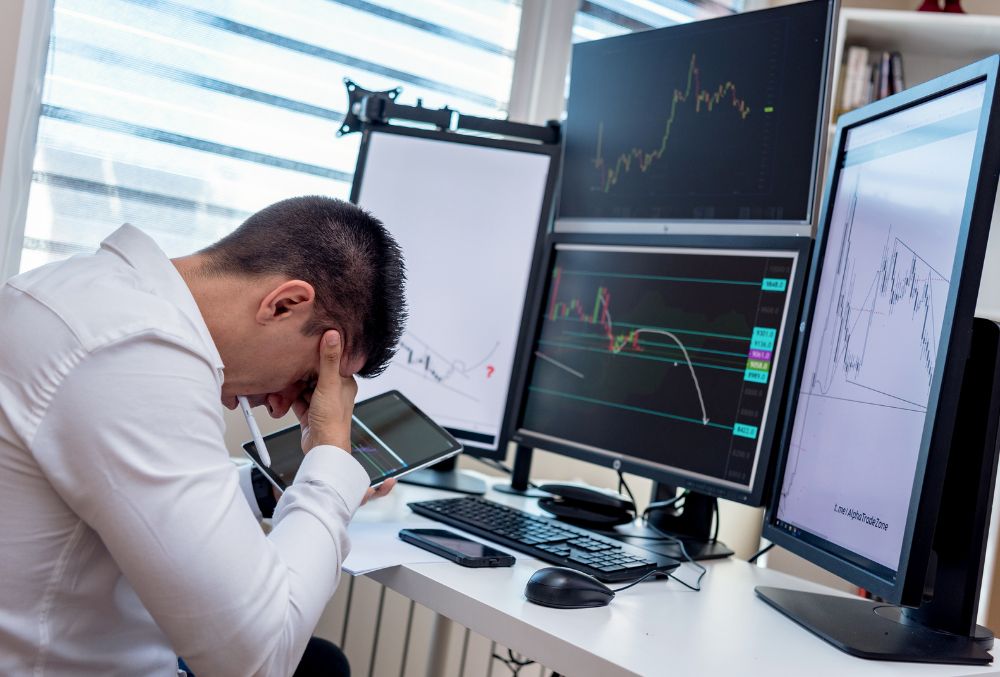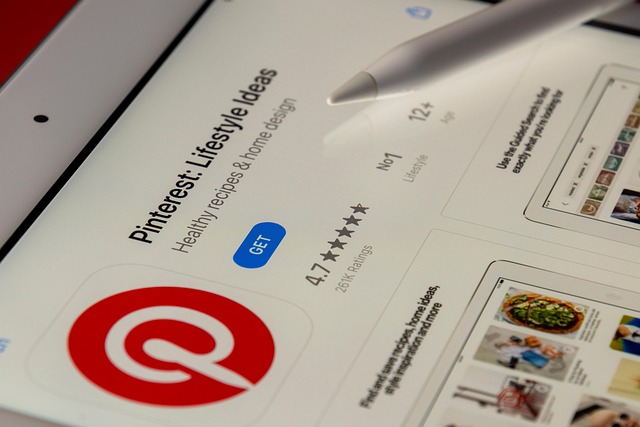Is Day Trading a Good Side Hustle – Beginner’s Guide
For the last year and a half, I’ve been dabbling in day trading. This is one side hustle I’ve always wanted to try, but this isn’t something you put a few thousand dollars into an account and start trading. It’s too risky. This begs the question: Is day trading a good side hustle?
Day trading can be a profitable side hustle, but success requires mastering technical and fundamental analysis, learning trading software, and ideally working with an experienced mentor to navigate the steep learning curve. The financial risks are substantial, and even seasoned traders experience losses, so never trade with money you can’t afford to lose. Most critically, you’ll need exceptional emotional discipline to stick to your strategy and avoid impulsive decisions when markets move against you.
I’ve spent years watching people chase the day trading dream, and I’ll be honest – it’s not the get-rich-quick scheme that social media influencers make it seem. But that doesn’t mean it’s impossible either.
Disclaimer: This article is for educational purposes only and should not be considered financial advice. Day trading involves significant risk and is not suitable for all investors. Always consult with qualified financial professionals before making investment decisions.
What Exactly Is Day Trading, and How Does It Work as a Side Hustle?
Day trading is the practice of buying and selling financial securities within the same trading day. Unlike long-term investing, where you hold stocks for months or years, day traders capitalize on small price movements that happen within hours, minutes, and even seconds.
As a side hustle, day trading offers an interesting proposition: you can potentially generate income while maintaining your full-time job. The US stock market typically trades from 7:00 AM to 8:00 PM EST, which means you could theoretically trade during lunch breaks, before work, or after hours with extended trading sessions.
I like to trade before I go to work in the morning, starting at 7 am. This is when I find my trading strategy works the best since there will be more traders and more volatility at this point in the day.
Related Book: If you’re a beginner, this book, How to Day Trade: The Plain Truth by Ross Cameron is great book that gives you a basic strategy to follow.
Here’s where it gets interesting – and complicated. Day trading isn’t like driving for Uber or freelance writing, where your time directly correlates to income. In trading, you can make $500 in thirty minutes or lose $1,000 in the same timeframe. It’s this volatility that makes it both attractive and dangerous.
The mechanics are straightforward: you analyze market patterns, identify potential opportunities, execute trades, and hopefully close positions for a profit before the market closes. Sounds simple, right? Well, that’s where the plot thickens.
The Brutal Truth: Is Day Trading Profitable as a Side Hustle?
Let’s address the elephant in the room. Is day trading profitable long-term? The statistics aren’t pretty, and I’m not going to sugarcoat them.
Research consistently shows that approximately 80-90% of day traders lose money over time. Even more sobering? Only about 3-5% of day traders consistently make profits year after year. These aren’t the odds you’d want when choosing traditional side hustle ideas with high returns.
But here’s the nuance that gets lost in those statistics: most people who fail at day trading treat it like gambling rather than a business. They jump in without proper education, risk management, or realistic expectations.
Compared to other side jobs, day trading has a unique risk-reward profile:
- Traditional side hustles (like food delivery or freelancing) offer predictable income but limited upside
- Day trading offers unlimited upside potential but can result in significant losses
- Make money online opportunities like affiliate marketing or dropshipping require time to build, but have lower capital requirements
The traders who do succeed typically share common traits: they treat trading like a business, continuously educate themselves, and maintain strict risk management rules.
| Risk | Time Investment | Cost To Start | |
| Day Trading | High | Low | High |
| Freelancing | Low | High | Low |
| Affiliate Marketing | Low | High | Low |
| Drop Shipping | Medium | High | High |
| Food Delivery | Low | High | Medium |
How Much Money Do You Really Need to Start Day Trading?
This is where many aspiring traders get their first reality check. The Pattern Day Trader (PDT) rule in the United States requires you to maintain a minimum of $25,000 in your margin trading account if you want to make more than three day trades within five business days.
But let’s be real – starting with exactly $25,000 is like bringing a knife to a gunfight. Here’s what you actually need:
Minimum Capital Requirements:
- Legal minimum: $25,000 for unlimited day trades
- Practical minimum: $30,000-$50,000 for proper risk management
- Comfortable starting point: $100,000+ for meaningful income potential
Why the higher amounts? Risk management experts recommend never risking more than 1-2% of your account on any single trade. With a $25,000 account, that’s only $250-$500 per trade. After commissions and potential losses, you’re not looking at life-changing money.
However, there are workarounds for smaller accounts:
You can open a cash account and take as many trades as you want. A cash account does not have a specific amount of money needed to open it unless the broker requires it. However, any cash used in the trade becomes off-limits until the following trading day when the trade settles. This is called T-1 Settlement.
For example, I opened a Webull cash account when I first got started and funded it with $100. Since my strategy focused on trading small-cap stocks priced between $2 and $20, I could take between 5 and 50 trades in one day.
The Hidden Risks of Part-Time Day Trading
Day trading with little money amplifies every mistake you make. When you’re trying to generate meaningful side income with a small account, the temptation to over-leverage and take excessive risks becomes almost irresistible.
Here are the main risks involved in day trading part-time:
Financial Risks:
- Capital loss: You can lose your entire trading account
- Opportunity cost: Money tied up in trading isn’t invested elsewhere
- Hidden costs: Commissions, platform fees, and taxes eat into profits
Emotional and Psychological Risks:
- Stress and anxiety: Watching money fluctuate in real-time is mentally exhausting
- Decision fatigue: Making rapid trading decisions while managing a full-time job
- Addiction potential: The dopamine rush of winning trades can be addictive
Professional Risks:
- Work performance: Constantly checking trades during work hours
- Time management: Balancing market hours with job responsibilities
- Burnout: Managing two demanding activities simultaneously
The emotional challenges in day trading are often underestimated. I’ve seen people develop insomnia, anxiety disorders, and strained relationships because they couldn’t handle the psychological pressure.

Time Investment: How Much of Your Day Does Trading Actually Consume?
One of the biggest misconceptions about part-time trading is that it only requires a few hours per day. In reality, successful day trading demands much more time than you might expect.
Daily Time Requirements:
- Pre-market preparation: 30-60 minutes (researching, planning trades)
- Active trading: 2-3 hours (depending on strategy)
- Post-market analysis: 30-45 minutes (reviewing trades, updating journal)
- Continuing education: 1-2 hours (studying patterns, learning new strategies)
Weekly Additional Tasks:
- Market research and analysis
- Platform maintenance and updates
- Tax preparation and record keeping
- Strategy backtesting and refinement
This isn’t a “set it and forget it” side hustle. If you’re working a demanding full-time job, finding just a few hours daily for trading can quickly become overwhelming.
Essential Skills and Knowledge for Success
What skills do I need to be a successful side-hustle day trader? The learning curve is steeper than most people realize.
Technical Skills:
- Chart analysis: Reading candlestick patterns, support, and resistance levels
- Technical indicators: Understanding moving averages, RSI, MACD, and volume
- Risk management: Position sizing, stop-losses, and portfolio allocation
- Platform proficiency: Mastering your chosen trading platforms
Soft Skills:
- Emotional control: Managing fear and greed during volatile markets
- Discipline: Sticking to your trading plan even during losing streaks
- Patience: Waiting for high-probability setups rather than forcing trades
- Continuous learning: Adapting to changing market conditions
Business Skills:
- Record keeping: Maintaining detailed trading logs for tax purposes
- Performance analysis: Identifying strengths and weaknesses in your trading
- Goal setting: Establishing realistic profit targets and risk limits
The traders who treat this like a hobby typically fail. Those who approach it as a serious business venture have better odds of success.
Best Markets and Assets for Beginner Day Traders
What markets or assets are best for beginner day traders? The choice between stocks, forex, and crypto can significantly impact your success.
U.S. Stocks:
- Pros: Regulated market, abundant resources, familiar territory
- Cons: PDT rule restrictions, limited extended hours
- Best for: Beginners with sufficient capital ($25,000+)
Forex Trading:
- Pros: 24-hour market, no PDT rule, high liquidity
- Cons: Complex market dynamics, higher leverage risks
- Best for: Those who can trade outside traditional market hours
Cryptocurrency:
- Pros: 24/7 market, high volatility, no PDT restrictions
- Cons: Extremely volatile, regulatory uncertainty
- Best for: Risk-tolerant traders comfortable with high volatility
For beginners, I typically recommend starting with the best stocks for day trading 2025 that are:
- Small-cap stocks priced between $2 and $20
- Stocks up at least 10% or more on the day
- Relative volume is 5x over its 50-day average
- A float below 10 million shares
- A news catalyst that is pushing the stock higher
To find these stocks, I like to use the Real Time Stock Screener app. The free version works great and shows you all the top gainers in the premarket and daily high market gainers
| Market | Capital Requirement | Hours | Volatility | Beginner Friendliness |
|---|---|---|---|---|
| U.S. Stocks | $25,000+ | 7:00-4:00 EST | High | High |
| Forex | $500+ | 24/5 | High | Medium |
| Crypto | $100+ | 24/7 | Very High | Low |
Tax Implications: What Every Side-Hustle Trader Needs to Know
How do taxes work for day trading as a side hustle? This is where many new traders get an unwelcome surprise.
Tax Classifications:
- Investor status: Capital gains/losses, limited deductions
- Trader status: Business expenses are deductible, but subject to self-employment tax
- Mark-to-market election: All gains/losses treated as ordinary income
Key Tax Considerations:
- Day trading profits are typically taxed as short-term capital gains (ordinary income rates)
- You can deduct trading-related expenses if you qualify as a trader
- Wash sale rules can complicate loss harvesting
- Quarterly estimated tax payments may be required
The tax implications for day traders can significantly impact your net profitability. I recommend consulting with a tax professional who specializes in trading before you begin.
Recommended Platforms and Tools for Beginners
What platforms and tools are recommended for beginner day traders? Your choice of broker and software can make or break your trading experience.
Top Trading Platforms:
TD Ameritrade Thinkorswim remains the gold standard for serious traders. The platform offers powerful analytics, paper trading capabilities, and comprehensive educational resources. While TD Ameritrade merged with Charles Schwab, Thinkorswim continues to operate as a flagship platform.
Interactive Brokers (IBKR) caters to professional-level traders with global market access and extremely low fees. However, the platform can be overwhelming for beginners.
ETRADE Power ETRADE strikes a good balance between functionality and user-friendliness, making it ideal for beginners who want room to grow.
Robinhood is a commission-free trading platform, but I don’t recommend it. They don’t offer level 2 data and do not offer all the tools necessary that most day traders will need.
Webull is the trading platform I use. They are a commission-free broker in the United States and are a great option for those getting started. They have a decent trading simulator, and the desktop software is completely free and easy to set up.
Below is a great video that goes in-depth and covers all the best day trading brokers if you would like to learn more.
Essential Tools:
- TradingView: Industry-standard charting and analysis
- TradingSim: Practice with historical market data
- Stock Screeners: Find potential trading opportunities
- Tradervue: Trade journaling software to track your metrics
- BamSEC: Research stock filings to learn more about the companies you’re trading
Managing Stress and Psychological Pressure
How can I manage the emotional stress and psychological pressure of day trading? This might be the most important section for your long-term success.
The psychological aspect of trading is brutal. You’re constantly making decisions under pressure, watching your money fluctuate in real-time, and dealing with the fear of missing out or losing everything.
Related Book: If you want to learn more about trading psychology, check out Trade Mindfully by Gary Dayton. I read this book and found it very helpful when it comes to trading psychology.
Stress Management Strategies:
- Set strict rules and follow them: Remove emotion from decision-making
- Use proper position sizing: Never risk more than you can afford to lose
- Take regular breaks: Step away from screens to maintain perspective
- Maintain work-life balance: Don’t let trading consume your entire life
- Find support communities: Connect with other traders for accountability
Warning Signs to Watch For:
- Checking trades constantly during work
- Losing sleep over positions
- Increasing position sizes after losses
- Constant FOMO (Fear of Missing Out)
- Revenge Trading when you have significant losses
- Trading is becoming your only topic of conversation
- Neglecting relationships and responsibilities
If you notice these signs, it might be time to step back and reassess whether day trading as a side hustle is right for you.
How to Get Started as a Day Trader
If I haven’t scared you away yet, then you might be wondering how to get started. Below is a great video by my mentor that walks you through the process. Below, I will give a basic step-by-step process you can use to get started.
Phase 1: Education (1-2 months)
- Learn as much as you can. Check out the Warrior Trading YouTube Channel. Ross is my mentor and shares his entire strategy for free online.
- Don’t take any trades in your first month; instead, dedicate yourself to learning as much as you can.
- Learn the basics of technical and fundamental analysis, how to read charts, how to pick the right stocks to trade, how to use your trading software, and more.
- Find a strategy that works for you. Ross details my strategy in the video above.
Phase 2: Paper Trading (6-12 months)
- Once you feel like you can have a grasp on things, it’s time to set up your simulated trading account. Webull has a great free sim trader. (Not an affiliate link)
- This is an account that lets you take trades in the real stock market without risking any money.
- Focus on your strategy and start taking one or two trades a day.
- Monitor your progress by focusing on accuracy. How many trades did you make money with, and how many did you lose on?
- 60% accuracy is a place to start. Any less than that and you will likely be losing money.
Phase 3: Small Live Account (6-12 months)
- Once you have two to three months in with 60% accuracy and aren’t losing money, it’s time to start trading with real money.
- Open a Webull Cash Account and fund it with $100. I figured $100 because if I lost that, I wouldn’t be too upset. Don’t put any more in than what you are willing to lose at this point.
- Start by taking just one trade a day with 1 share. Remember, less is more at this point. You are just trying to prove you can make money with your strategy.
Phase 4: Scale or Pivot
- If you can hold a 60% accuracy or better and you are profitable, then it’s time to increase your share size.
- Slowly increase the amount of shares you are buying from 1 to 10 to 25 to 50 to 100 to 200, and so on. Take only 1 trade per day.
- You may have to add more money to your account as you increase the share size.
- If you are not hitting the accuracy goal and losing money, you may need to decrease share size or go back to the simulator.
- Once you’ve had a lot of success doing one trade per day and you have enough capital in your account, you can move to 2 trades per day.
Over time, you will be able to increase your share size and take more and more trades per day to higher amounts, but this all depends on your risk tolerance.
So take it slow and easy at first, don’t jump in with 10,000 on a small-cap stock and lose 50 cents a share. This is the quickest way to blow up your account and fail at trading.
The Bottom Line: Should You Try Day Trading as a Side Hustle?
After laying out all the facts, here’s my honest assessment: day trading can work as a side hustle, but only for a very specific type of person under very specific circumstances.
Day trading might work for you if:
- You have at least $50,000+ in risk capital (money you can afford to lose completely)
- You can dedicate 2 to 3 hours daily to trading and education
- You have excellent emotional control and discipline
- You’re willing to treat it as a business, not a hobby
- You have a stable primary income that won’t be affected by trading losses
- You can handle high levels of stress and uncertainty
Day trading is probably NOT for you if:
- You’re looking for quick, easy money
- You can’t afford to lose your starting capital
- You don’t have time for proper education and preparation
- You’re emotionally reactive or prone to impulsive decisions
- You’re expecting consistent, predictable income
- You can’t separate your ego from your trading results
Better Alternatives to Consider
Before committing to day trading, consider these potentially more reliable side income opportunities:
Lower-Risk Investment Approaches:
- Index fund investing: Steady long-term growth with minimal time investment
- Dividend growth investing: Regular income plus capital appreciation
- Real estate crowdfunding: Passive real estate exposure with lower capital requirements
Active Side Hustles:
- Freelance consulting: Monetize your professional skills
- E-commerce: Build an online business with growth potential
- Content creation: Develop income streams through blogging, YouTube, or courses.
These alternatives might not offer the excitement of day trading, but they typically provide more predictable returns with less stress and time commitment.
Final Thoughts: The Reality Check You Need
Is day trading worth it? The answer depends entirely on your situation, risk tolerance, and realistic expectations. If you’re interested, start by following the first two phases I outlined above with education and sim trading. If you can’t seem to get good results, then you know your answer before you invest one dollar into this side business.
I won’t lie to you – successful day trading requires a combination of skill, discipline, capital, and frankly, a bit of luck. The vast majority of people who attempt it either lose money or make less than they would in traditional side hustles when you factor in the time investment.
However, for the small percentage who can master the psychological and technical aspects, day trading can provide substantial supplemental income. The key is approaching it with realistic expectations and proper preparation.
If you decide to move forward, remember these crucial points:
- Start with education, not money
- Never risk more than you can afford to lose completely
- Treat it as a business, not entertainment
- Have multiple backup plans
- Be prepared to walk away if it’s not working
The markets will always be there. Take your time, do it right, and don’t let social media influencers pressure you into rushing the process.
Ready to explore day trading responsibly? Start with education and paper trading. Your future self will thank you for taking the slow, methodical approach rather than diving in headfirst.
Remember: there are no shortcuts to anywhere worth going – and that definitely applies to day trading success.







